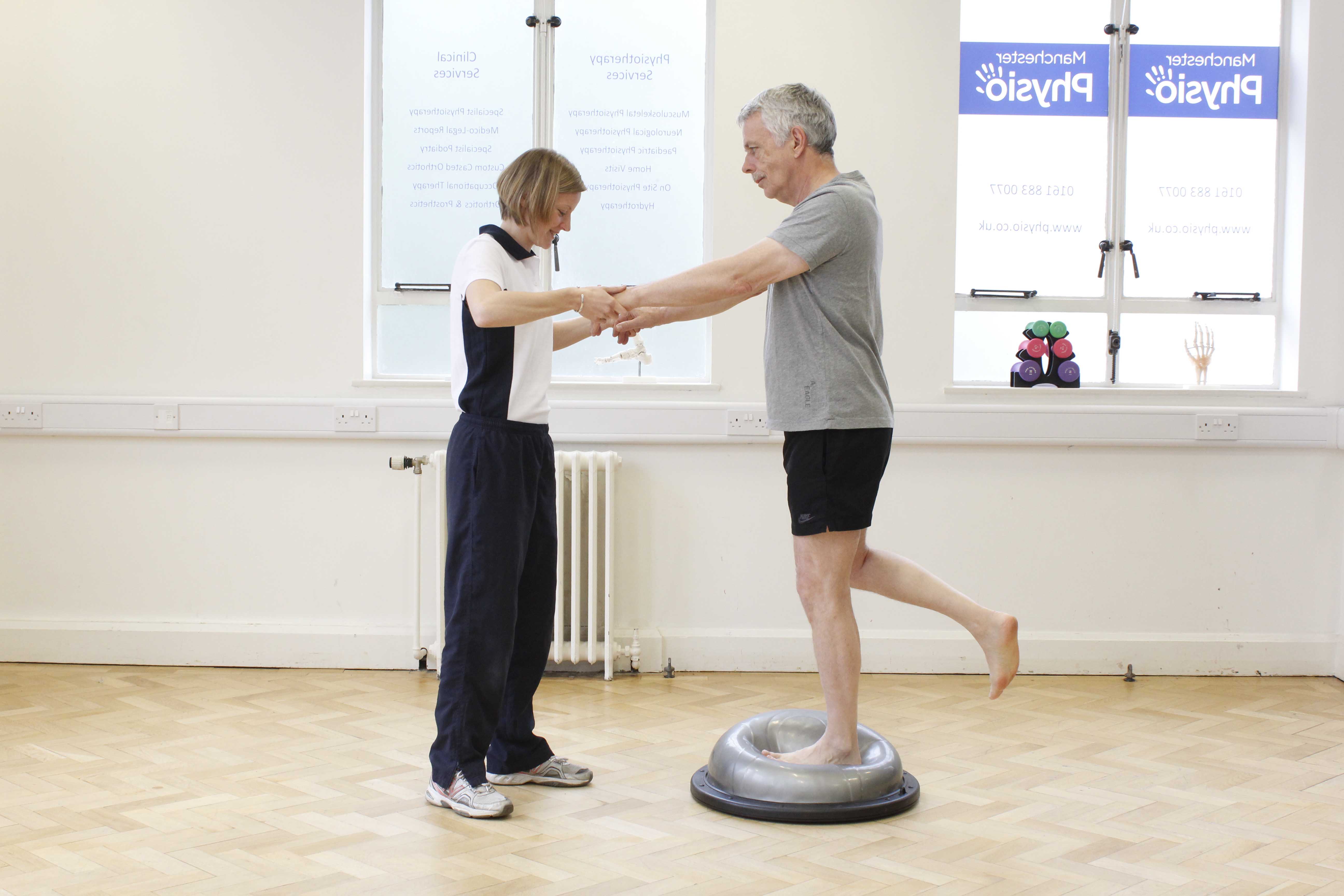Your physiotherapist will provide a detailed and thorough assessment of your range of movement, muscle length, pain, sensation and skin integrity in order to ensure that thermoplastic splinting is the ideal treatment technique for you. Your range of movement will be measured before and after splinting using a goniometer in order to keep an objective record of your improvement and progress.
 Above: Hip, knee and ankle stability and proprioception exercises assisted by a neurological physiotherapist
Above: Hip, knee and ankle stability and proprioception exercises assisted by a neurological physiotherapistOnce the splint is made, you will need to adhere to a splinting regime as prescribed by your therapist to indicate the frequency and time spent wearing your splint. It may be necessary to gradually increase the time spent wearing your splint in order to ensure the procedure is safe and pain free. If desired, your physiotherapist will show your family and carers how to apply and remove the splint to ensure that it can be managed safely at home. Your splinting regime and range of movement will be reviewed regularly by your physiotherapist in order to ensure your thermoplastic splint still works effectively.
Thermoplastic splinting does not replace the need for physiotherapy; you will also need to comply with a stretching and strengthening exercise program. This will ensure that you achieve the optimum improvement to your function and quality of life. Thermoplastic splinting and physiotherapy sessions can be provided at your home or at one of our clinic locations.
If you would like more information about our thermoplastic splinting service, please follow the links below or call Physio.co.uk today on 0330 088 7800, to book an appointment or to speak to a neurological physiotherapist. You can also book appointments online using our online booking system
- What is Thermoplastic Splinting
- How does Thermoplastic Splinting Work
- Benefits of Thermoplastic Splinting
- Who is Suitable for Thermoplastic Splinting

 0330 088 7800
0330 088 7800


































